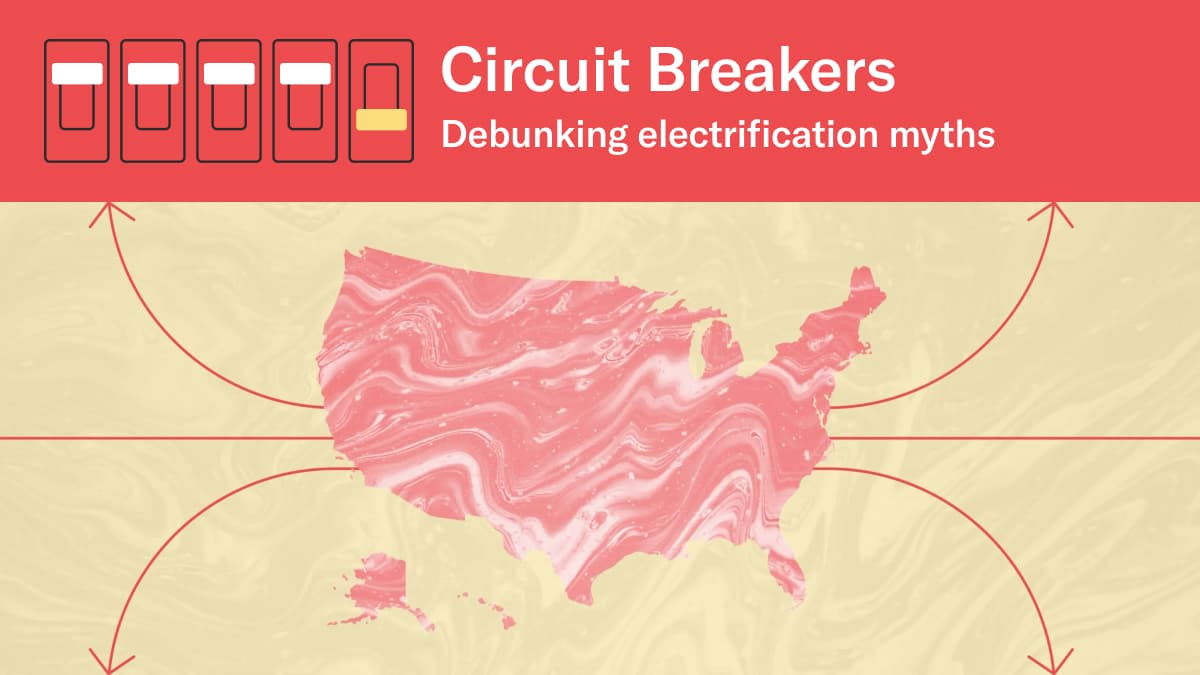Zapping electric myths
Some shocking electric truths
We use the word movement to describe the work of mass electrification. That is an intentional choice — to electrify 121 million homes in the coming decades, it will take more than the flip of a switch. It will take millions of not-so-flip decisions made in homes all across the country. The “when it dies, electrify” mantra must become second nature when we look at the machines and systems that power our homes and transportation. From here on out, every new appliance should be electric.
Of course, this is a huge transformation. And there will be moments of frustration — navigating incentives can be tricky (hint: there’s a calculator for that), installations can go wrong, and there’s lots to figure out as we electrify everything. But electrification is still the only way forward, and superior to the alternative in every respect.
With the Inflation Reduction Act incentives making electrification more affordable than ever, the opposing fossil fuel powers-that-be are running low on valid arguments against electrification. They’re playing dirty like methane. We’re seeing a significant spike in misinformation. So let’s tackle four of the most common myths and how to respond if you find yourself in a battle of watts.
4 Electrification Myths

MYTH: Heat pumps don’t work in cold climates.
FACT: If heat pumps didn’t work in the cold, people wouldn’t be using them in cold climates…but they are.
With IRA incentives, plus a robust state incentive program, a growing number of Mainers are switching to heat pumps as their primary heat source. Maine consistently lands in the top ten list of coldest states year-round. In Europe, the highest concentration of heat pumps is found in the coldest climates. People buy what works and people in very cold places are buying heat pumps. Match, set, point to the humble heat pump.

MYTH: Electrification will break the grid.
FACT: Mass electrification will require the grid to grow and change, but the end result will be a smarter, more efficient system.
This isn’t misplaced confidence, either. America has been there, done that, bought the T-shirt. Between 1950 - 1970, the amount of electricity delivered increased by more than 4X in the U.S. The difference between then and now (apart from everything), is a whole host of technologies available to make the grid work smarter, not harder. Smart panel installations alone help manage the influx of electricity to a building to match real-world energy needs (i.e. you need more energy when you get home from work and start laundry than when you’re out for the whole day). Smart, huh?

MYTH: Gas is more reliable than electrical power in a power outage.
FACT: Most fossil-fuel appliances still require some electricity to function, so a power outage will affect those machines as well.
Power outages range in severity from minor inconveniences to major disruptions. We want machines that can bounce back quickly (or, ideally, keep working!) when the power fails. Electrification will increase household energy reliability as new technologies are coming to market that will keep machines running when the grid goes down.

MYTH: Electrification is too expensive.
FACT: Looking at the full energy picture (price + efficiency), electrical appliances are the long-term savings winner.
In 2022, gas prices increased by six times the price of electricity. Layering on increased efficiency (heat pumps alone are three times as efficient as natural gas furnaces), electrical machines will save Americans more money over time. Pro tip: plug in your zip code to our electric potential map to learn more!
Bonus! One last electrical mythbusting blow dealt by Mr. Heat Pump himself…

MYTH: Renewable natural gas can meet climate goals and still keep gas infrastructure.
FACT: Decarbonizing buildings with “renewable natural gas” doesn’t stand up to scrutiny, and is a distraction from our clean electric future.
“Renewable natural gas” is often proposed as a way to meet climate targets while still investing in fossil fuel infrastructure. Unfortunately, this tempting proposition just doesn’t stand up to scrutiny, nor does it deliver the benefits that electrification does. No matter the process, leaks are unavoidable in the gas supply chain. With leak levels included, emissions from RNG are just as high as those from conventional natural gas. Renewable natural gas is still dirty, and there isn’t enough of it. Even with a mass deployment effort, renewable natural gas only has the potential to supply 1.3 percent of current U.S. fossil gas consumption. Higher cost. RNG clocks in at two to fifteen times higher price than fossil gas. The moral of the story: Renewable natural gas is still….gas, with all of the dirty side effects that come with its fossil predecessor, and some new ones. Electrification is ready to deploy today at scale, actually reduces emissions, saves money, and avoids the harmful health impacts of burning gas in our homes.
Read Sam’s full memo in our latest edition of Circuit Breakers, where we routinely bust electrification myths with heat pomp and circumstance.


